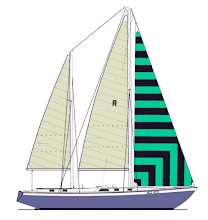
When sailing in or near thunder clouds where lightning is seen or heard then it is time to protect your portable electronics from electromagnetic radiation by using the onboard microwave oven as a Faraday cage. Portable items to be protected would be the EPIRB, Sat Phone, GPS, VHF, Quartz Watch, Digital Camera, Laptop, and Short Wave. The conventional oven will also work as a Faraday cage but protection isn't 100% unless the oven window is covered with aluminum foil. Ground the rigging with jumper cables and trail the opposite ends in the ocean. Unplug antennas from the Radar, SSB, VHF, and GPS. The prudent sailor should still carry a sextant, mechanical chronometer, and a magnetic compass just in case.








